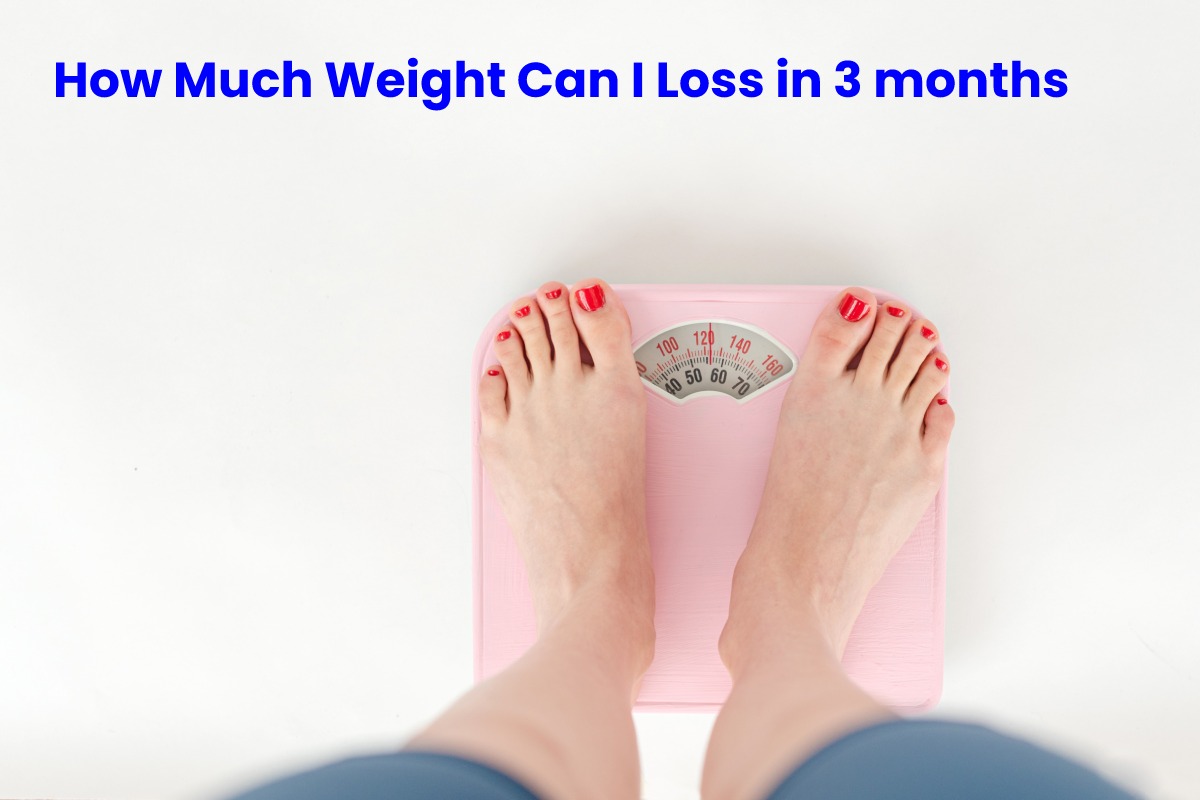How to lose weight in 3 months? A safe, healthy, and realistic goal is to lose 0.5-to-1% of your body weight per week, around 1-to-2 pounds of weight loss per week. In other words, 12-to-24 pounds you can lose weight in 3 months.
Ideally, try to lose 1/2 to 1 kg (1 to 2 pounds) per week, allowing you to lose 5 to 10 kg (12 to 24 pounds) over three months.
Table of Contents
Create a realistic weight loss plan
Identify your total and weekly weight loss goals.
Knowing what you want to achieve will allow you to create an effective diet and exercise plan. For example, if you’re going to lose 50 pounds (24 kg) in total, your goal should be to lose 4 pounds (2 kg) per week. Keep in mind that this is a fast rate of weight loss that is not considered healthy. Ideally, try to lose 1/2 to 1 kg (1 to 2 pounds) per week, allowing you to lose 5 to 10 kg (12 to 24 pounds) over three months.
Analyze your Basal Metabolic Rate to find out how many calories you burn per day.
The amount of calories you burn individually day depends on your age, height, weight, and the amount of activity you do throughout the day. There are many Basal Metabolic Rate calculators online that you can use to find out your body’s basic calorie needs. Then, use one to calculate the number of calories you burn in an average day.
Limit how many calories you need to cut down to lose weight.
After you discover your basic calorie needs, use this number to help you determine how many calories to cut from your diet. It will also let you set a daily goal for the number of calories you burn through exercise. Set a realistic goal. Do not lower your caloric intake below 1200 per day.
If your basal metabolic rate is 2,300 calories, you could reduce your daily caloric intake to 1,300 to lose 2 pounds (1 kg) per week.
To lose 4 pounds (2 kg) per week, you need to burn an additional 1,000 calories per day as it requires you to do 2 hours of intense cardio each day. So instead, focus on doing 30 minutes of cardio to start with, and increase the amount and intensity as you get stronger.
Track your eating and exercise in a food diary or app.
It’s essential to keep track of everything you put in your mouth to get an accurate number of your daily caloric intake. Recording your exercise regimen in a journal or app will also tell you how many calories you’re burning and how many calories you’ve cut.

Adjust your eating habits
More fruits and vegetables
Eat more fruits and vegetables to fill you up with fewer calories. Fruits and vegetables are whole with nutrients, but they are much lower in calories than other foods, such as cookies, chips, and bread. Replace some foods you usually eat with fruits and vegetables to reduce calories. Fill your plate mid with fruits and vegetables at every meal.
For example, instead of having fries with a sandwich for lunch, have a green salad or a bowl of fresh melon.
Instead of eating a double serving of rice for dinner, eat 1/2 cup (120 g) of cooked rice and 1 cup (240 g) of cauliflower rice.
Try intermittent fasting
To give your digestive system a long break. Intermittent fasting involves avoiding eating for 14 to 16 hours between your last meal of the day and your next meal the next day. Eat all your meals and snacks within the same 8-10 hour window each day. Limiting yourself to eating in an 8-10 hour period will help reduce your overall caloric intake. Designate a time through the day when you are most active, such as during work or school hours.
For example, you might decide to eat all your meals between 8:00 am and 4:00 pm and then fast from 4:00 pm to 8:00 am the next day. If you want to designate a 10-hour window, you could plan to eat between 7:00 am and 5:00 pm each day
Look for low-carb diets
To eliminate a significant source of calories. Although it is not necessary to follow a low-carb diet to lose weight, some people find it helpful to reduce or limit carbohydrates. Look up diets like Atkins, South Beach, and keto to find a plan that works for you.[8]
Some low-carb diets ask you to count carbohydrates, while others only limit the types of foods you can eat. Pick a plan that you think you can stick it.
Avoid processed foods and simple carbohydrates, such as cookies, crackers, chips, and baked goods. Also, avoid foods with added sugars, such as candy, sodas, and sugary cereals.
Instead, opt for whole, low-carb foods. Focus on consuming primarily non-starchy vegetables, such as kale, broccoli, and bell peppers. Choose lean options like grilled chicken, eggs, and low-fat dairy for protein.
Drink water throughout the day
To stay hydrated. Staying hydrated helps your body function right and keeps you feeling fuller throughout the day. People sometimes confuse thirst with hunger, so having a glass of water every time you think you’re hungry will help you stay hydrated and avoid eating when you’re not hungry.
Avoid drinks full of calories, such as sugary sodas, juices, and alcohol. These add calories with little or no nutritional value.
Keep in mind that there is no right amount of water that you should drink. Drink water whenever you feel thirsty or sweat to stay hydrated.
Incorporate healthy snacks between meals.
Snacking helps prevent being very hungry and overeating. Have a healthy snack on hand so you won’t be curious to choose something unhealthy. Here are some healthy snacks to keep on hand.
Slow down your eating speed
Practice mindful eating to slow down your eating speed. Mindful eating is all about paying close attention to how you feel about food. It helps you eat more slowly and therefore avoid overeating. The following are some strategies for mindful eating.
Exercise to Burn more Calories
Incorporate more physical activity into your daily routine. Finding opportunities to exercise more throughout the day will allow you to burn more calories. Even a little extra movement throughout the day can increase the number of calories burned. Here are some ways to change more during the day.
Start with 30 minutes of exercise almost daily and increase the amount.
Regular physical activity is beneficial for general health, but it also helps with weight loss. The recommended amount of physical activity for good health is 150 minutes per week, divided into 30 minutes five days a week. However, you can break up your exercise into shorter or longer sessions if this works better for you. As you gain strength and endurance, exercise more to increase the number of calories you burn. Try to get 60-90 minutes of physical activity five days a week for optimal results.
Practice resistance training to burn more calories while your body is at rest.
Resistance training helps your body build muscle, increasing your basal metabolic rate and burning more calories. Strength training also improves your physique and makes it easier to do everyday activities. Incorporate two 45-minute strength training sessions each week in addition to your cardio exercises.
Try high-intensity interval training.
High-intensity interval training (HIIT) involves alternating between high and moderate intensity during exercise sessions. Doing so will allow you to burn more calories in a shorter amount of time and is also a great way to build endurance.
Conclusion
After three months, you’ll see more of a significant improvement in strength and endurance and a noticeable improvement in resting heart rate, blood sugar levels, blood pressure, and other health indicators.

